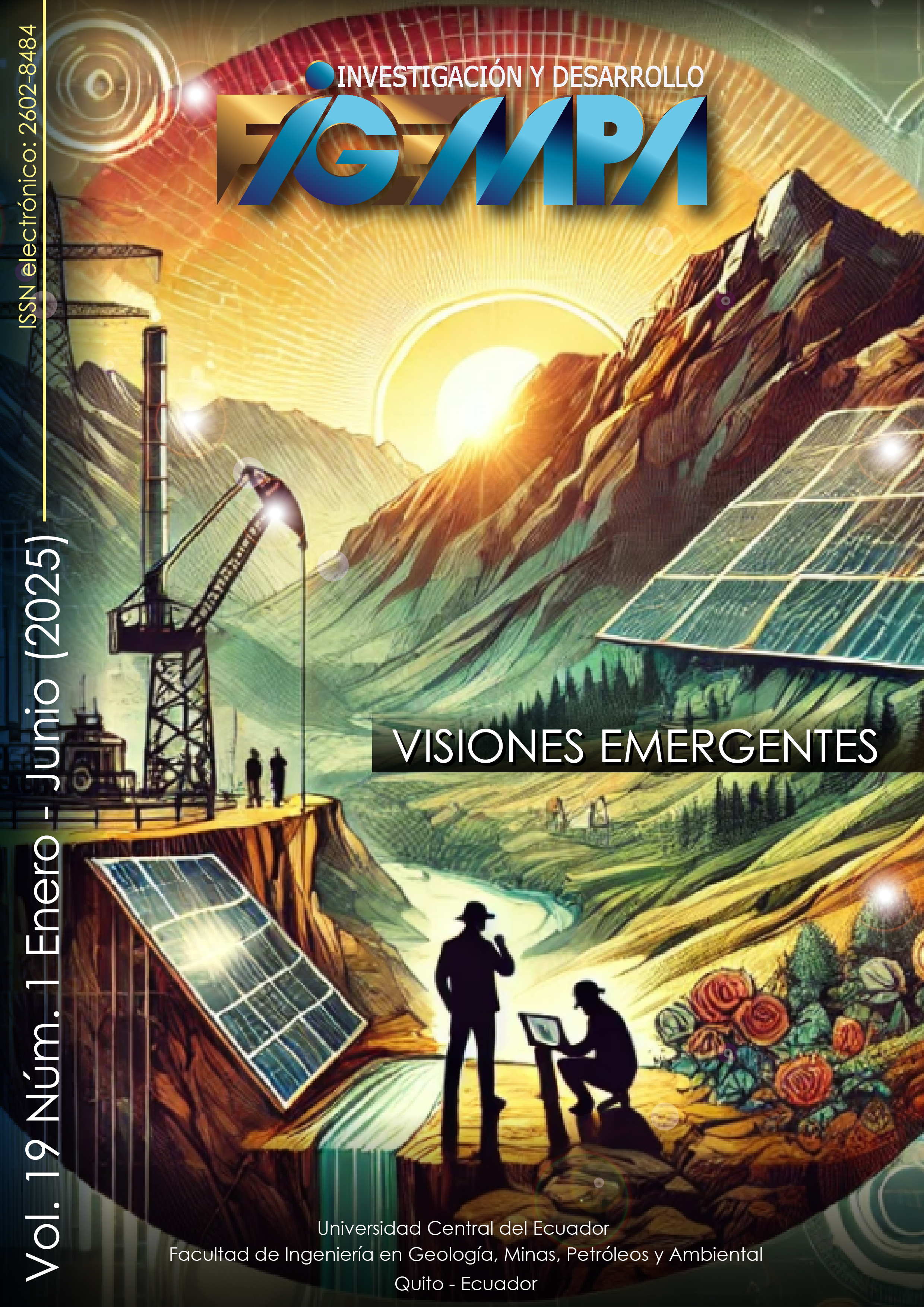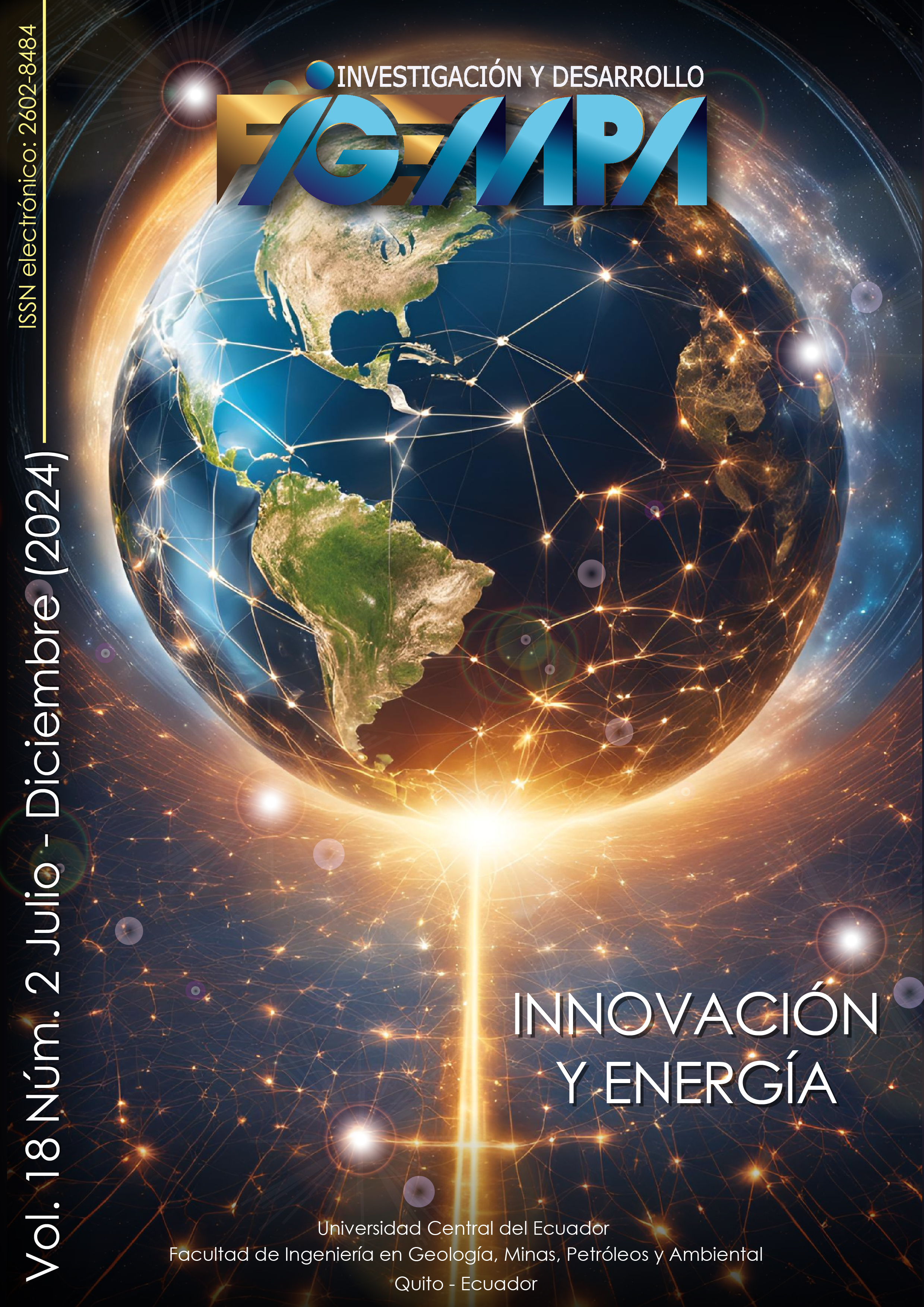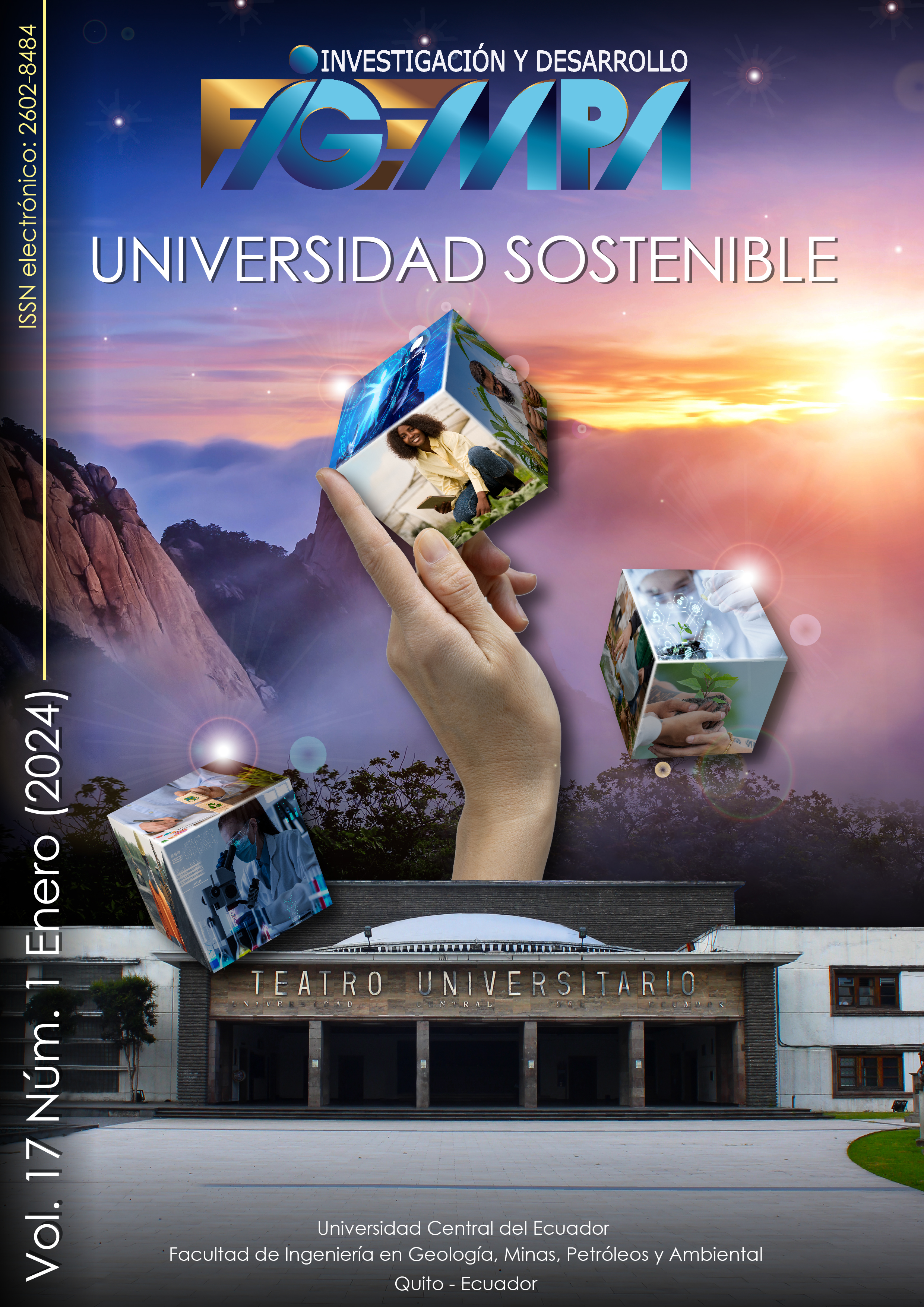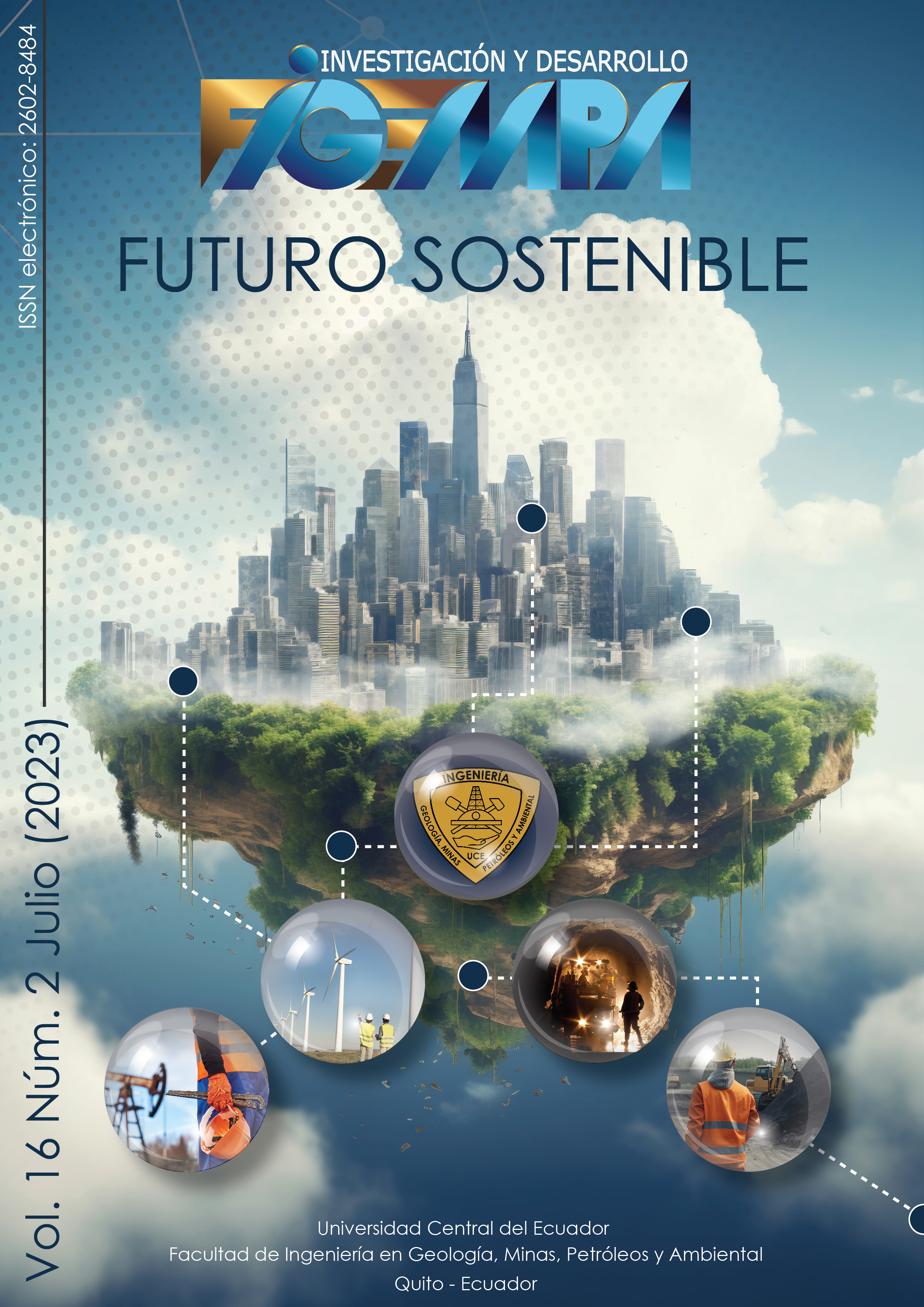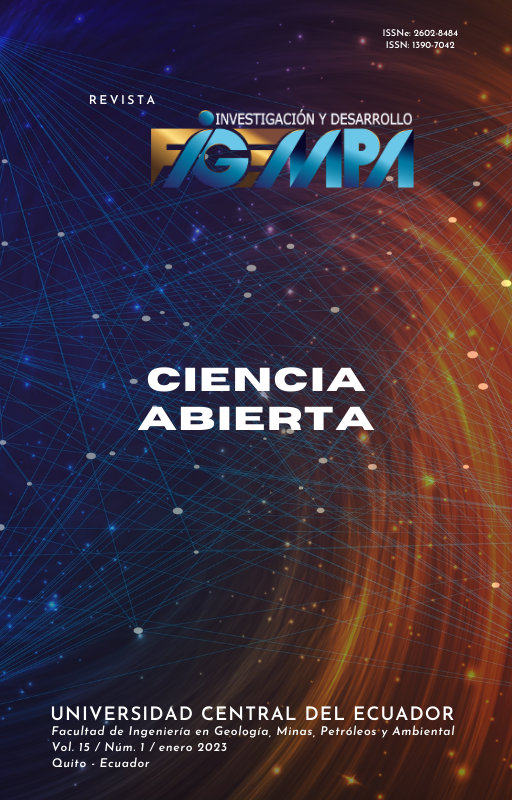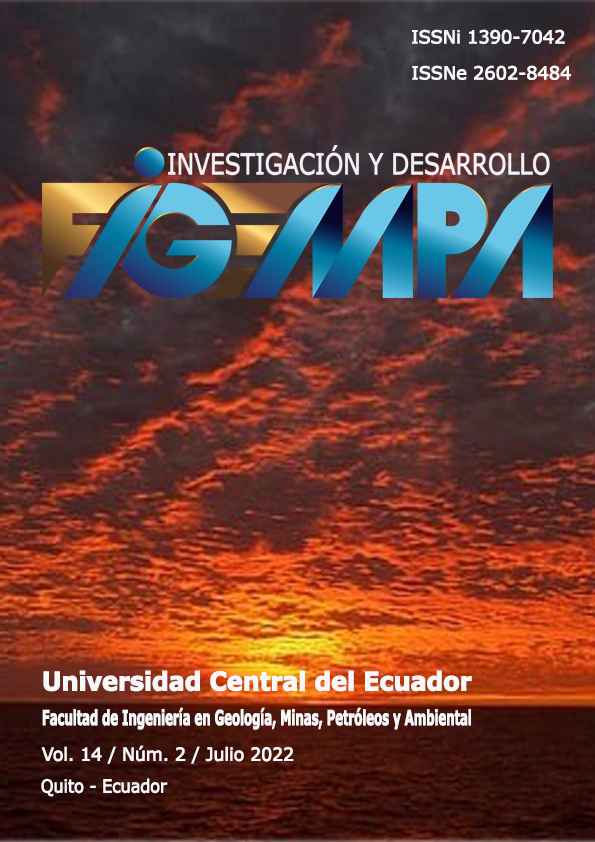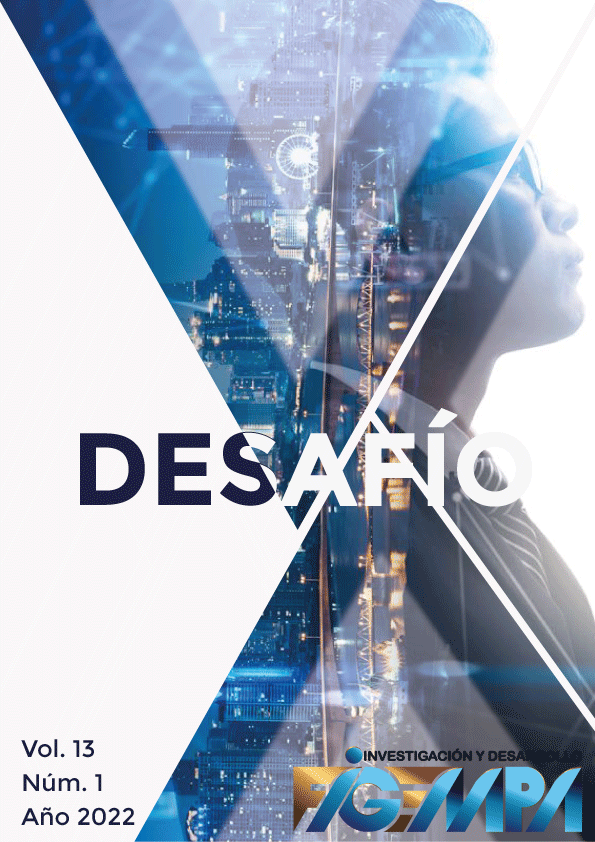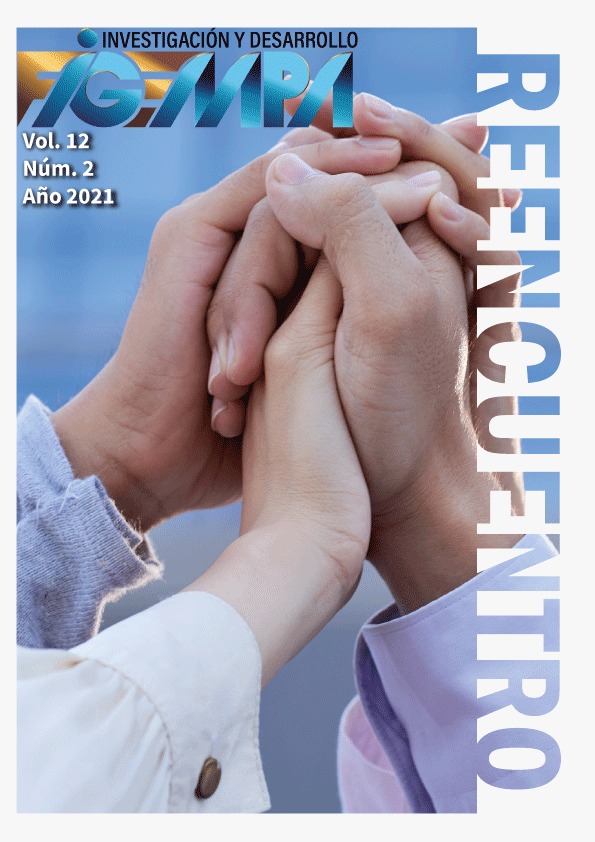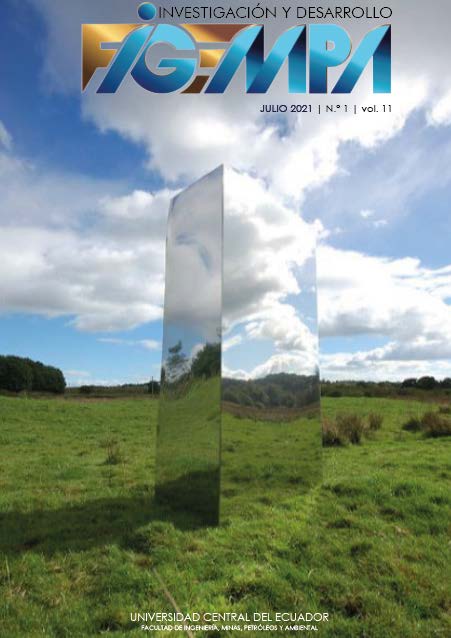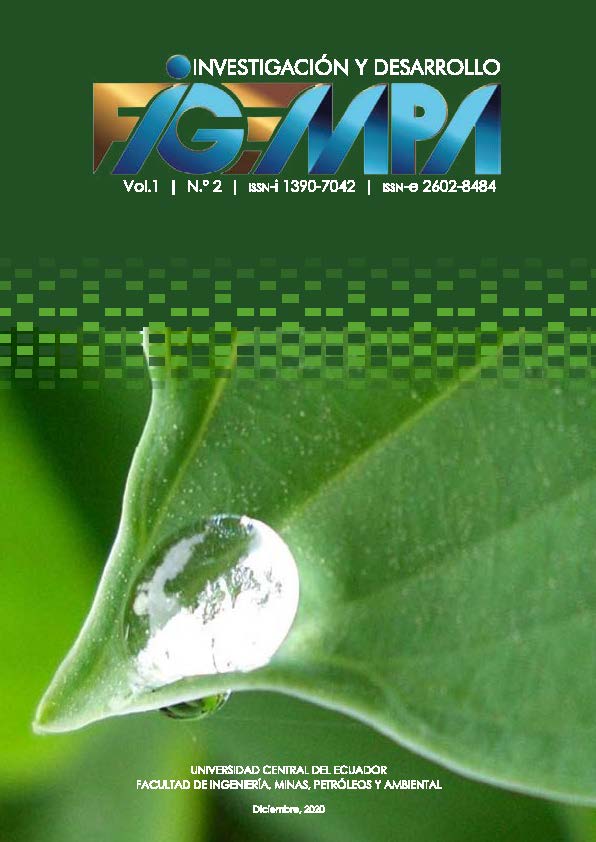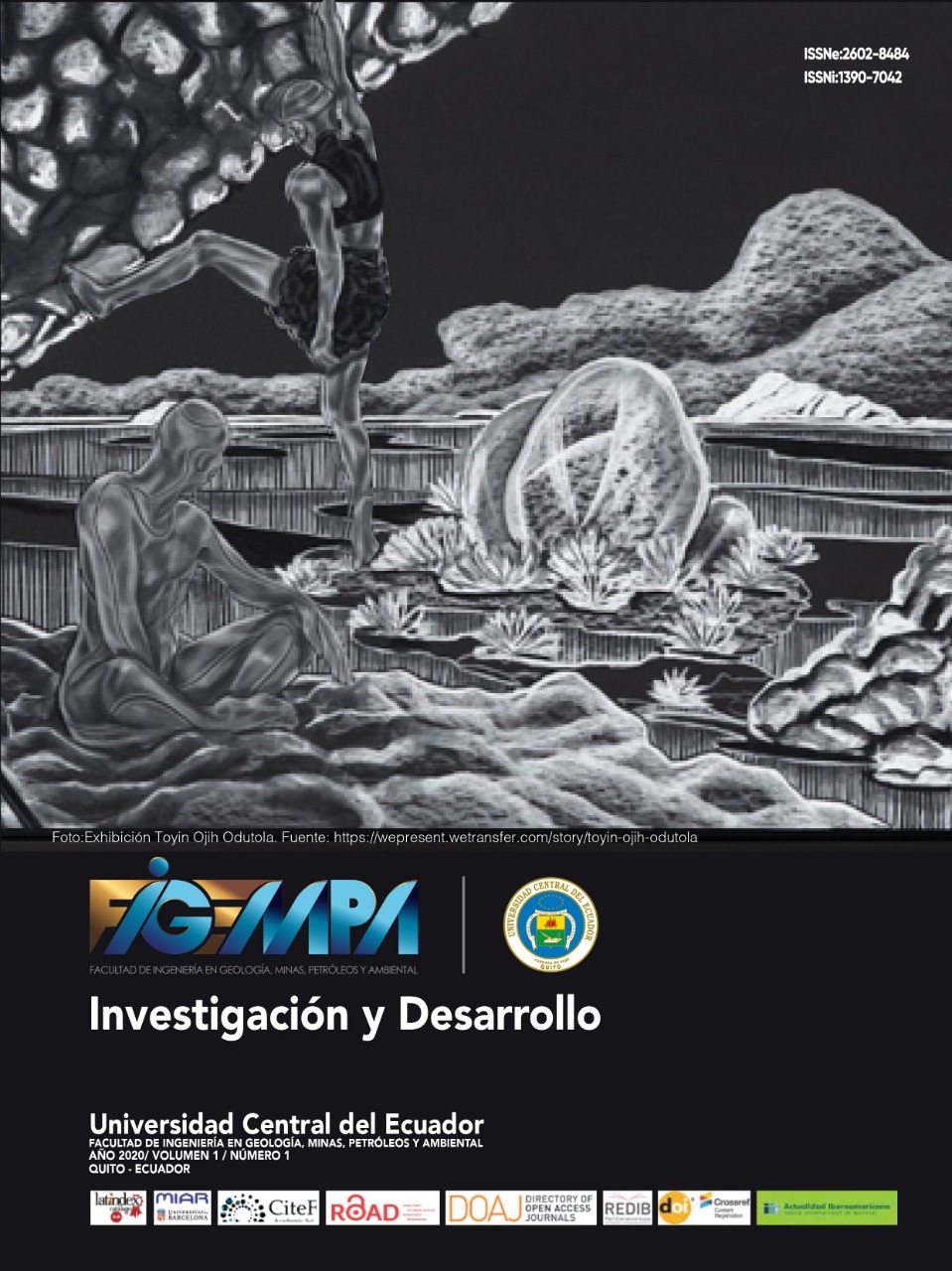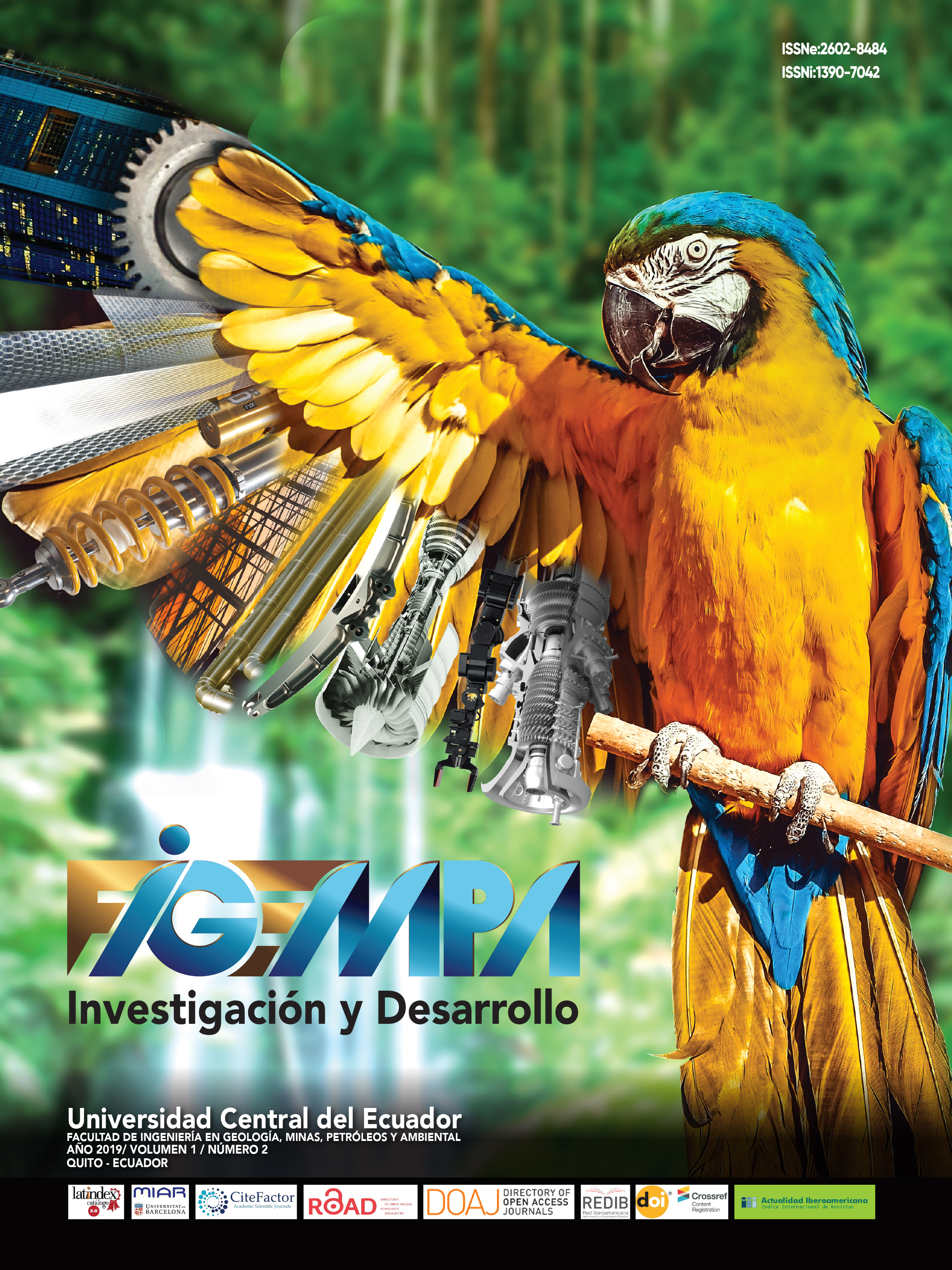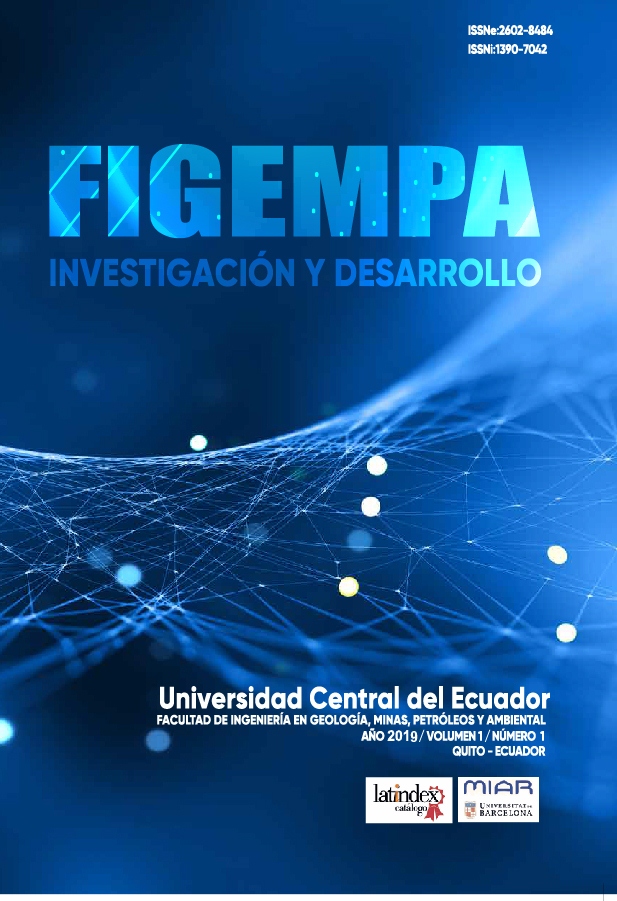Recursos Estratégicos
Vol. 20 No. 2 (2025)
Strategic Resources represent a comprehensive vision that integrates science, technology, ecology, and culture as pillars of sustainable and sovereign development. This approach invites reflection on the balance between progress and preservation—a central axis in applied research across Latin America. Three key dimensions stand out: critical materials as the foundation of the technological revolution; the intelligent management of data and energy as the basis for digital and green economies; and the ancestral connection to territory, essential for an ethical perspective on development. This synthesis highlights the interdependence between deep geology and human well-being, showing how subsurface resources support the energy transition while their uneven distribution poses geopolitical challenges. Data and visual representations reinforce the key role of science in the responsible and sustainable management of these resources.
Visiones emergentes
Vol. 19 No. 1 (2025)
"Emerging Visions" represents the convergence between technology, sustainability, and natural resources, in which FIGEMPA is committed. The mountainous landscapes with our equatorial sun are illuminated by the warm tones of dawn, symbolizing geological wealth and the natural environment. In the foreground, stylized figures of engineers analyze data, highlighting the human focus on innovation. Technological infrastructure, such as mining structures and solar panels, is integrated to reflect the transition towards sustainable practices in the industry. Geometric elements and digital flows overlap, evoking the connection between science and emerging technologies that drive change, to create a balance between nature and modernity. Our composition conveys progress, collaboration, and a commitment to the sustainable future of engineering.
Innovation and Energy
Vol. 18 No. 2 (2024)
The confluence of innovation and energy lies at the core of a transformative change, where novel ideas are redefining our interaction with society and the environment. This innovative metamorphosis is manifested in the development and implementation of technologies, processes, and approaches that are reshaping efficiency, sustainability, and safety in the production, distribution, and use of energy. Advances in renewable energy sources, improvements in energy efficiency, the application of smart technologies in energy management, and the exploration of new forms of storage and distribution are just some of the elements that make up this constantly evolving landscape. A key player in this scenario is artificial intelligence, which is playing an increasingly important role in improving and optimizing energy management and use. In this context, it is imperative to address contemporary challenges such as the transition to cleaner energy, the reduction of greenhouse gas emissions, and the strengthening of the resilience and security of energy supply. However, innovation is not limited to technological advances. It also involves changes in business models, regulations, and collaboration among various sector stakeholders. This dynamic and ongoing process is driving progress and transformation towards an energy future that will not only be more sustainable and efficient but also smarter and more connected.
Universidad Sostenible
Vol. 17 No. 1 (2024)
**Traducción al inglés:**
The sustainable university is a vision that seeks to transcend the traditional barriers of higher education. It is an institution committed to managing its resources efficiently and sustainably, without relying heavily on external sources. It explores practices and policies that promote economic, energy, and social self-sufficiency, as well as the crucial role it plays in the sustainable development of the nation. The sustainable university not only focuses on efficiency and sustainability in resource management but also places a strong emphasis on research and engagement with society. The research component is fundamental to the growth and advancement of the university, as it drives the generation of new knowledge and innovation, fosters interdisciplinary research, and promotes the involvement of faculty and students in research projects that address social and environmental challenges. Seeking to establish a close connection with society, which implies not only sharing knowledge and resources with the community but also listening to and understanding the needs and demands of society. The sustainable university seeks to promote technology and knowledge transfer, social responsibility through programs and projects that address social problems and promote sustainable development in collaboration with companies, government agencies, and non-governmental organizations, to identify sustainable solutions and improve the quality of life for people.
Futuro Sostenible
Vol. 16 No. 2 (2023)
The responsible use of natural resources is essential to ensure a sustainable future. As our population and demand for resources increase, we must adopt approaches that balance our current needs with the Earth's capacity to regenerate. This involves promoting ecosystem conservation, implementing sustainable agricultural and forestry practices, encouraging energy efficiency and reducing dependence on fossil fuels. In addition, it is crucial to develop clean and renewable technologies, promote environmental education and citizen participation, and establish policies that promote the circular economy and environmental justice. Only through these efforts will we be able to build a prosperous future in harmony with our natural environment.
Ciencia Abierta
Vol. 15 No. 1 (2023)
Desde los albores de la humanidad, hemos mirado al cielo y nos hemos preguntado qué lugar ocupa nuestra Tierra, qué hay más allá de nuestro sistema solar. Hemos avanzado tecnológicamente, se han crearon telescopios para explorar el universo, recoger señales de radio que vienen de las estrellas con la esperanza de hallar un mensaje de otra civilización, se busca vida microscópica en otros planetas, se construyeron naves para visitar la Luna, se estudia el origen del universo como se estudia el origen de la vida en la Tierra y tenemos una estación espacial permanente patrullando nuestro planeta. Pero aún tenemos mucho por descubrir o redescubrir en el mar que nos atrae con su sabiduría poderosa ya que fue allí donde comenzó la vida, un mar que estamos empeñados en contaminar con nuestras acciones irresponsables. Nuestros bosques que nos atraen, en los que nuestros ancestros vivieron en nidos construidos en los árboles o en cuevas para protegerse de las inclemencias del tiempo y de los predadores. Por último, las estrellas, que siguen apasionando a nuestras sociedades. Los fenómenos astronómicos han sido venerados desde la antigüedad como ritos, dioses y toda clase de esoterismo mezclado con fábulas y rituales, tanto como signo religioso como simbólico. Las cosas van cambiando, se habla con más libertad. Se reconoce que pueden existir otras realidades, evidentemente tenemos que estar abiertos a todas las posibilidades y tenemos el imperativo ético y moral de informar de nuestros descubrimientos, tener una mente abierta que rompa paradigmas, de allí que la ciencia abierta sí que es un objetivo, una meta y un camino, que además tiene detrás una voluntad política clara, el acceso universal a los resultados de investigación, tanto a las publicaciones como a los datos de investigación, así como la minería sobre estos (text and data mining), permitirán una reutilización eficaz de la información, el avance del conocimiento y un incremento en la innovación que es difícil de imaginar ahora. Son muchos los agentes implicados para provocar el cambio real hacia una ciencia realmente abierta. Por un lado, están los investigadores, pero también las editoriales, las bibliotecas e intermediarios de la ciencia, así como los agentes que financian esa investigación.
Esperanza
Vol. 14 No. 2 (2022)
Aristóteles afirmaba que la esperanza es el sueño del hombre despierto, como una visión utópica de algo en un futuro cercano, pero, sobre todo, de tu capacidad y determinación para alcanzar tus propios sueños e ilusiones. En tiempos de pandemia, guerra, hambre, desencanto, dolor y desesperanza es refrescante tener una voz que nos ofrezca la oportunidad de pensarse a partir de la esperanza, vivenciando la esencia de su significación o revestirse de otras formas para permanecer latente en el devenir humano. Se hace urgente entonces sentir, pensar, hablar, vivir, proyectar y defender la esperanza, ya que de no hacerlo el ser humano estaría cediendo terreno a la derrota y al derrumbamiento, es una de las pruebas de la libertad, cerrarnos a la esperanza, en una especie de suicido, y podemos inhibirla, que es lo que más frecuentemente sucede, reafirmar la esperanza sería entonces reafirmar la vida.
Desafío
Vol. 13 No. 1 (2022)
Para los seres humanos el desafío surge bajo principios y reglas que impulsan la superación personal, resulta irrelevante donde nacemos, lo trascendental son las acciones que realizamos para cumplirlo. Es bueno ponernos a prueba y enfrentarnos a otras para crecer y progresar en lo que sabemos hacer, tener actitud de superación frente a los contratiempos, desavenencias y desilusiones con diferentes personas y en variadas situaciones, y casi siempre pensamos que los demás o las circunstancias son las que deben cambiar para mejorar nuestras vidas. El único y verdadero cambio que efectivamente puede transformarnos es el que empieza y se realiza dentro de nosotros mismos, por iniciativa propia. Día a día el hombre ha ido perdiendo los valores, su autoestima y la costumbre de utilizar su máximo poder: el creador. Su búsqueda es un proceso continuo de transformación, un reto, una actitud positiva frente a la vida basada en la confianza, en la iniciativa, en el amor propio y en el estudio permanente de nuestra interioridad. Ciertamente hay una gran necesidad de seres con calidad humana, motivados, decididos, luchadores, que no tengan miedo ni flaqueen en los momentos difíciles de la vida, que deseen vencer los obstáculos y alcanzar su prosperidad y por ende su realización personal. ¡Seamos activos, tomemos conciencia, explotemos esa fuerza imaginativa y estampémosle nuestro sello personal!
Rediscover
Vol. 12 No. 2 (2021)
In a dense, winding time, full of traps, they intersect, interrupt and correspond and will end up joining the infinite as a limit experience the survival of the species and its environment, therefore, of our home, our planet. Let's try to see the light at the end of the tunnel and not only as a discursive form but as something new with perspectives that generate an echo towards life, innovation, humanism and being able to escape stereotypes and chains, perhaps cause us vertigo, but it is a path that leads us to find ourselves in everyday life with a new learning that is not subject to chance in destiny. of men. We are fortunate, understood in the sense of luck, but we know that for the unconscious nothing is unpredictable and for philosophy there are no coincidences.
Renacer
Vol. 11 No. 1 (2021)
Julio del 2021, una época de pandemia y del espejismo de la vuelta a la “normalidad”, si bien el progreso científico nos permite tener esperanza, pero esto tiene un contra y es que se produce el espejismo imperiosamente. Que esto cambiaría lo suficiente en pocos días, no es así y no lo será. Nos toca como civilización: Renacer, renovar, ser resilientes, resucitar a una “nueva vida” que sale del desastre, mantener la fe y la esperanza en medio de un baile con la incertidumbre que genera la pandemia, el confinamiento, estados de alerta y de excepción, se relajan las medidas y las endurecen, se aprueban vacunas que no sabemos su eficacia, podremos viajar, juntarnos con los abuelos o los padres, volver con los amigos, el colapso sanitario y la muerte de conocidos, de familiares o desconocidos, nada cambiará tan pronto, debemos hacernos a la idea que esto en el mejor de los casos durará algunos años. Habrá oasis de días en los que el trabajo presencial será seguro y fingiremos que coger un auto de transporte público no da miedo. Ahora hay vacunas y mascarillas homologadas. Un año y meses después las cifras son terribles, se ha normalizado el horror y la muerte. El coronavirus sigue circulando por el mundo. El progreso científico nos ha permitido tener esperanza. Hay quien lleva un año haciendo planes para cuando vuelva la normalidad, como si esta estuviese ahí al lado, como si fuese verdad que se puede volver atrás, sin secuelas, como si esto solo fuese una mala noche. Esto ha provocado hastío, fatiga e inquietud. La ciencia y la fe nos ha permitido ser lo suficientemente optimistas, debemos tener una espiritualidad en el que debemos llorar, atrevernos a decir lo que sentimos, es un gran coraje, que alimenta el alma y no quedarnos en esa superficie donde todo es una caricatura, cristal, light, desenmascaremos nuestras mentiras y ayudémonos a andar en verdad, seamos responsables de nuestro futuro sin señalar a otros. Vivamos esta pandemia no te escondas, atraviesa con amor esta oscuridad, debemos vivir los problemas no solo resolverlos, no pretendas pasar la página y decir todo ya pasó. Belleza y bondad veo en nosotros también egoísmo y vanidad, pero eso no es todo, veo algo más difícil de gobernar que el bien y el mal y es la paradoja y la contradicción somos un alma poliédrica en la que vivimos acelerada o lentamente y no pactemos, la contradicción es el criterio de lo real.
¡Resurrexit sicut dixit. Alleluja!.
Natural resources and pandemic
Vol. 10 No. 2 (2020)
As we approach the year of the fight against sars-cov-2 that causes covid-19, it is a top priority for all countries - as it is perceived as one of the main threats to humanity - to adopt a planetary health approach to avoid other potential risks that may arise from it; we must have a better understanding that health and civilization depend on natural systems; We must protect our environment and wisely manage the resources that our Mother Earth lavishes on us, it is an essential strategy to avoid major crises in the future. Natural resources guarantee a healthy life on the planet, rethinking environmental protection, determining protected areas in a post-COVID-19 scenario as part of the development agenda and facing the challenges ahead. Let's not let silent viruses attack our foundations; the university —and in particular FIGEMPA— assume the ethical, moral, scientific and investigative commitment to train professionals who are scientifically and technologically trained to understand the importance of Earth sciences, natural resources and how to face future challenges.
Resiliencia
Vol. 9 No. 1 (2020)
Monochrome is a composite painting with a single color or black and white, its result is to be able to appreciate and educate, ultimately, a space for reflection during this turbulent time of pandemic (COVID-19), a time of great pain, anger and confusion. It is a radical act to create beauty and to investigate in different conditions, realizing that this "normality" that we lived was abnormal. We have to fight the urge to contribute to pain, it is a daily fight to do it, it is in our hearts to overcome these events that affect people, our jobs, our lives. We hope to come out of this critical phase to help us gather, to heal, to find beauty in our fleeting moments despite pain and trauma, and in the end, the investigative work in Ecuador and in the world, contemplate the human being as the ultimate end for which to make and generate peace in the midst of this cruel madness. Approaching the investigative process is acquiring an intense commitment to creating tools that allow us to explore our potential with the idea of proposing practical solutions, not speculative or utopian, that invite society to contemplate with a holistic vision, a different but fantastic world, where the elements (earth, water, air, fire) of our Mother Earth (Pachamama, GAIA, etc.) help to break the paradigms and that the man leaves that cave that does not let him observe the images created by his darkness. Therefore, we subvert the "normal" conception of the 20th century, tinged by injustice, oppression, abandonment, anguish, despair, irrationality, individualism, vanity, to see the light of solidarity, discipline, resilience, friendship, respect, justice, tolerance, teamwork, in short, love for our environment of which we are part.
Tecnología y recursos naturales
Vol. 8 No. 2 (2019)
The global trend is a correspondence between the efficient use of natural resources and development that allows us to face the challenges of providing food, water and energy to allow the entire population a decent life. In recent years the use of natural resources has entered into a strong debate, in which it has not been well understood that technology is much more than its practical applications, it is the result of the conceptual building of science; It is therefore a collective cultural work that, locally, learns from the environment and takes advantage of resources without rupturing the social fabric. It is our feeling that technologies applied to natural resources develop a space focused on knowledge of natural resources, and the management of technical tools that allow these resources to be exploited, within a range of sustainable development. Natural resources are the elements of nature that man can use and take advantage of. These natural resources also represent sources of wealth for economic exploitation. For example, minerals, soil, animals and plants constitute natural resources that man can use directly as sources for this exploitation. Similarly, fuels, wind and water can be used as natural resources for energy production. But the best use of a natural resource depends on the knowledge that man has in this regard, and on the laws that govern the conservation of the megadiversity of our country.
TECHNOLOGY
Vol. 7 No. 1 (2019)
Natural resources are the elements of nature that man can use and take advantage of, they represent sources of wealth for the development of our societies. The best use of a natural resource depends on the knowledge that man has about it, and the laws that govern its conservation. Technology and scientific advances have made our society evolve, so it is important to create and strengthen research networks that allow us to share knowledge and optimize existing resources for this purpose. This requires breaking paradigms and generating new concepts and models of policies: scientific, technological, industrial, environmental based on solidarity and international integration with a criterion of social commitment that leads to physical, mental, social, ethical and moral improvement of being human with responsibility towards our Mother Earth and forge a world where we are not slaves of the machines, but that these are at our service.
SOCIETY
Vol. 6 No. 2 (2018)
Man is a social being, he has always lived in society as a natural fact, needing it to be born into a family, to live as a group, to develop. Neither man nor human society can be understood or explained independently, so nature has been used, appropriated and exploited to its advantage, positively and negatively impacting the conditions of natural resources necessary for life; this relationship was characterized because man was supplied with it by what he hunted and what he collected. Today, the relationship between society and nature is an important aspect of debate in the different political, academic and everyday scenarios, among others, due to the multiple problems resulting today between the human being and the interactions that developed in the environment. The antagonism of the nature-society relationship, allows trends to emerge and new approaches seek to integrate and associate these two fundamental components for social development and the preservation of the environment, are the object of reflection and study in our academic and practical perspective on the responsible use of natural resources, that is why our motto "FIGEMPA: committed to life and development", to achieve a fair structure in which citizens feel recognized a balance between what society offers them and the cooperative effort that demands them would be the success of a social system that has not yet been achieved, for stratification in classes according to the roles of power, the generational detation of wealth, corruption institutional, legal privileges, labour apathy, tax fraud and commercial oligarchy remain as exponents of the apparent inability to successfully govern humanity. All the imperfection that is perceived induces social disenchantment, but it should not be forgotten that this same society, with all its flaws, is the one that transmits and enriches, from generation to generation, science and knowledge that sustain progress
MAN
Vol. 5 No. 1 (2018)
The perfect combination of the four elements (water, air, fire, Earth) allowed the creation of life, a process in which, throughout history, the human being is the greater uncertainty as Sartre puts it: "man... begins not to be nothing. It will only be after, and will be just as has been done"and which have been given different conceptions, which in one way or another, determine that it is a being underway. Its genetic code has allowed it to be endowed with reason and will creature, projected to a future that is expected to be better. A continuous and infinite history that reveals the possibility of being free, decide and choose the pluridimensionalidad of everyday life and that makes it unique amongst peers and being single allows you to take advantage of effective, efficient, rational and responsibly the natural resources that surround it. In this context the magazine FIGEMPA: Investigación y Desarrollo in compliance with the aim of disseminating studies for teachers, professionals and students to answer the questions that accompany us every moment: where do we come from?, where are we ? and where are we going?
AIR
Vol. 4 No. 2 (2017)
Anaximenes (5th century BC) puts the air as the first mobile, infinite, eternal, indefinite or principle of all things, from which everything emerges and everything returns to which, through two physical processes: rarefaction and condensation. When air is rarefies becomes fire, and when it condenses it becomes wind, clouds, water, Earth or stones. The air, the combination of gases in slightly varying proportions (% nitrogen, 20.95% oxygen, 0.93% argon and 0.04% carbon dioxide and small amounts of other gases such as argon, xenon, krypton, helium, neon 78,09) which is the atmosphere terrestrial, that remain around the planet by action of gravity, it is essential for life on the planet. The Romans worshiped the air, already under the name of Jupiter who took the purest air or ether, already under the name of Juno which was considered as the denser air that surrounds us, already with the Minerva as well as other times that they used to air a particular deity were to which spouse the Moon and daughter dew. Air is life, also kills, there our commitment from the Academy to strengthen programmes of conservation of our environment friendly, unique organization, in which we are part of a housing complex of synergy, allowing life. Air, inexhaustible natural resource. Everything that moves is capable of generating kinetic energy, which can be transformed into electricity, item that is in constant motion over the Earth, so take advantage of this energy is completely free and the best thing is that it doesn't pollute. Of course that it is not always circulating in the form of wind, but combined with the solar energy, which is also inexhaustible, can fill the energy needs of the entire planet, just have the devices needed to make it useful for applications to the modern society requires.
FIRE
Vol. 3 No. 1 (2017)
Fire is a set of particles or incandescent molecules of combustible matter, capable of emitting visible light, product of a chemical reaction of violent oxidation. From this conceptualization, primitive man discovered how to ignite the fire, beating the darkness and the cold, feeling fascinated by his strength and power. We dance around the fire invoking invincible spirits, gather in a circle around a bonfire, sit in front of a chimney on a winter night, are rites that relate to the ancestral attraction of fire, its belonging only to the gods, Until Prometheus stole the Holy Flame and gave it to the men. Many religions associate fire with the divine, symbol of change, purification and sacrifice. It is also a magical symbol of traditional cosmogony in the west and from the Andean Cosmovision it belongs to Inti (Sun), linked to the spiritual world, the future and the refined vital energy that allows the earth to rise to the mountains, to the sky, basic giver of energy in the form of light and heat. Humanity took a big leap in its evolution when it was able to generate and control its own fire (food, metallurgy, heat, etc.), which illuminates, purifies, fertilizes and transmutess (destroys something and uses its energy to generate another thing). It applies not only to matter, but also to the most dense emotions (anger, extreme fear, hatred, resentment, envy, jealousy, violence). If we work with a deep intent, from the soul, it can help us to transmute those negative feelings in love, whatever their form, because it is closely linked to the sacred fire that shines in our hearts, helping us to achieve the vision and Purpose of our life. Therefore, FIGEMPA contributes to the development of science and industry, in the country and in the world, with the training of highly trained and ethically committed professionals in the use and responsible management of natural and energetic resources.
WATER
Vol. 2 No. 2 (2016)
The water throughout the history of mankind, it was stated that it was the substance, beginning, principle, foundation, the primordial element of which is composed all the material reality of the cosmos, where everything is conformed by this and has fulfilled a importamte role in the Literature as a symbol of purification. This Interrelacián water-man is associated with the sense of beauty, the sense of harmony of our land, our people and our quality of life. Water is part of the emotional, and therefore, response to water-related approaches does not have to be just rational, we are facing the ethical value of water. The current technological development makes it possible to harmonize the use of the resources offered by the Mother Earth among them the hydrocarbons and minerals with the preservation of this important resource.
EARTH
Vol. 1 No. 1 (2016)
Mother Earth is our life and guarantees our freedom. It provides us with livelihood resources that form interrelated systems that contribute to the development of society. The cover reflects the conjunction of Mother Earth, its resources including minerals and hydrocarbons; humans; The life and rebirth of a Central University of Ecuador and a FIGEMPA committed to the sustainable use of resources that retake their leadership in the Ecuadorian university as generators of thought, art, science and technology with Social responsibility.


